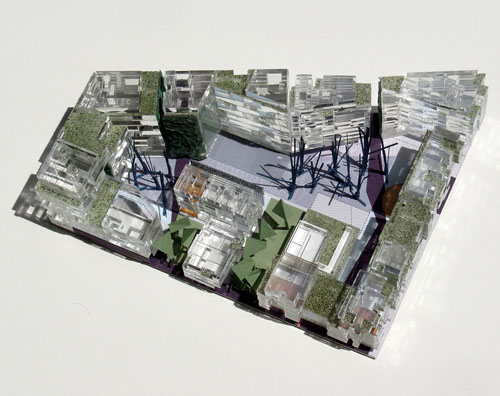Studio Associato Bernardo Secchi Paola ViganòArchitecture | Urbanism | Landscape |
| ZAC Seguin, Boulogne-Billancourt (Paris) - international competition |
| client: | city of Boulogne-Billancourt |
| program: | housing development |
| date: | 2006 |
| consultant: | VCenK, Tribu Ingénierie, Socété A.S.Mizrahi |
| team: | |
Porosity, percolation, permeability are the words that illustrate the concept of the urban project of the Zac Séguin : the Seine towards the center of Boulogne Billancourt open spaces seep through the lot and connect the city to the river. The lot A3, located between the street and the new Kermen street, along the courtyard Zola and Great Traverse is already far from the Seine and the park. It is the island which by its position , its shape and the quantities concerned poses an extreme manner the theme of porosity evoked by the Architectural Requirements Specification Urban and landscape . The triangular island , in consequence of the re- opening of the rue Emile Zola disappeared during the years Renault has a strong edge to the north (street Kermen ) and to the east (over Zola) that contains the office programs. The western edge is part of the special atmosphere of the Grand Traverse , a quiet pedestrian and garden area . The edge south on New Street, a return to the course and contains the Zola housing programs . The different edges are traversed in both directions, or by passages or through cuts and transparency ; green continuities connect the horizontal and vertical surfaces. The area of the lot is the product of these crosses : looks, movements. It is not a heart island in the traditional sense , but an inhabited garden built volumes and floor surfaces contribute to its construction. |
|

studio 06
<< bernardo secchi | paola viganò ![]()